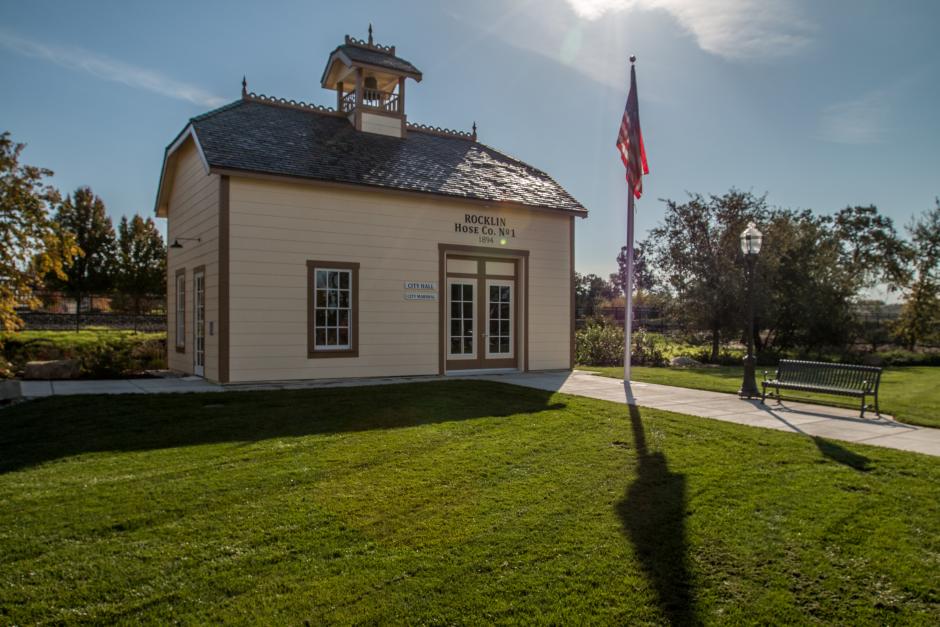History of Rocklin
History of Rocklin
Rocklin was first recognized as a destination along the transcontinental railroad in 1864, about the same time granite mining began. Rocklin was incorporated in 1893 during the heyday of railroad and granite mining activity. By 1910, 22 quarries operated in Rocklin and, in 1912, nearly 2,000 train carloads of granite were sent out of town to become part of the state capitol building and buildings in San Francisco.
First Developed Land
North of Rocklin’s core was Spring Valley Ranch, founded in 1855 by the Whitney family. Whitney’s ranch included sheep and a wide variety of agricultural products. Over the years, 25 miles of crushed stone roads, 12 granite bridges, stables, barns, and housing for 200 ranch hands and their families were all constructed on this sprawling 30,000 acres, now considered the first developed property in Rocklin.
Whitney’s ranch was eventually subdivided and sold off to various development interests as the expansion of suburban communities from Sacramento to the northeast led to the growth of the housing market in Rocklin during the late 1950s and early 1960s. This resulted in the development of the Sunset Whitney neighborhood, centered around a beautiful golf course.
Modern Business Expansion
Beginning in the 1980s, Rocklin realized the benefits of a lower cost of living and land that drew high technology firms and other industries to the region. This resulted in an expansion of commercial and residential development, including Stanford Ranch, the 3,000-acre master planned community that had also been part of Spring Valley Ranch. A steady period of growth continued in Rocklin with additional master plan areas including Whitney Oaks (1,000 acres) and Whitney Ranch (1,300 acres).
Looking Forward
As Rocklin has evolved, the City has saved many of the original granite bridges used to cross creeks on the Spring Valley Ranch and has designed parks to include these bridges.
Rocklin is now nearing the end of its growth phase. With few remaining large, undeveloped parcels and no opportunities for annexation, City leaders are shifting their focus from one of growth to long‐term sustainability. Rocklin must ensure that the City’s high quality of life can be sustained in the years to come. This shift in focus requires innovative thinking, but also allows for unprecedented opportunities.
Part of the City’s long‐term model for sustainability is to look back on where it all began: the City’s core. Downtown and Historic Rocklin are ripe with opportunities for redevelopment. Quarries still dot the landscape, providing a unique asset for new community, park and recreational uses.
Historic Sites in Rocklin
Visit Rocklin’s historic locations with our interactive tour (view the text-only tour).
For more information, contact the Rocklin Historical Society and the Rocklin History Museum at (916) 624-3464, or their website at rocklinhistory.org.
Rocklin’s Chinese-American Legacy
How Chinese Americans Built California and the History of Violence They Encountered
The City of Rocklin is a strong community with many accomplishments we are proud of. But as we anticipate our bright future, it’s important to reflect on our past as well, and the place our City had in the history of California and its diverse population.
The Forgotten Rocklin Chinatown
Today Chinatowns in San Francisco and Los Angeles are world-famous tourist hotspots, featuring distinct Asian cuisine and events. Chinese immigration to the United States was widespread in California in the 1860s, and nearly every city in Placer County, including Rocklin, hosted growing communities of Chinese immigrants. Yet today, the only remnants of these once thriving Chinese American neighborhoods are a few buildings and the occasional historical marker.
History of the Rocklin Library
The Rocklin Branch Library opened in February 1943 on the lower floor of the City Hall Building. It was open six hours a week. In May 1965, the Library was moved across the road and hours increased to 24 per week.
Historic City Hall
Historic City Hall (3980 Rocklin Road) was the City of Rocklin’s first center of city business and municipal meetings.
Adolf Pernu, owner of Rocklin’s early 20th Century California Granite Company, built the City Hall in 1912 as a company store for his employees. The 1912 date is inscribed in a granite frontispiece over the front entrance.
History of the Rocklin Fire Department
In the early 1890s, demand for Rocklin’s light-gray granite building stone grew steadily and Rocklin’s quarries were at peak activity. Rocklin’s railroad roundhouse employed 300 people and businesses flourished along Granite Avenue (now Rocklin Road), Front Street, and Railroad Avenue.
Remembering Rocklin Hose Company No. 1
In the early 1890s, demand for Rocklin’s light-gray granite building stone grew steadily and Rocklin’s quarries were at peak activity. Rocklin’s railroad roundhouse employed 300 people and businesses flourished along Granite Avenue (now Rocklin Road), Front Street and Railroad Avenue.








